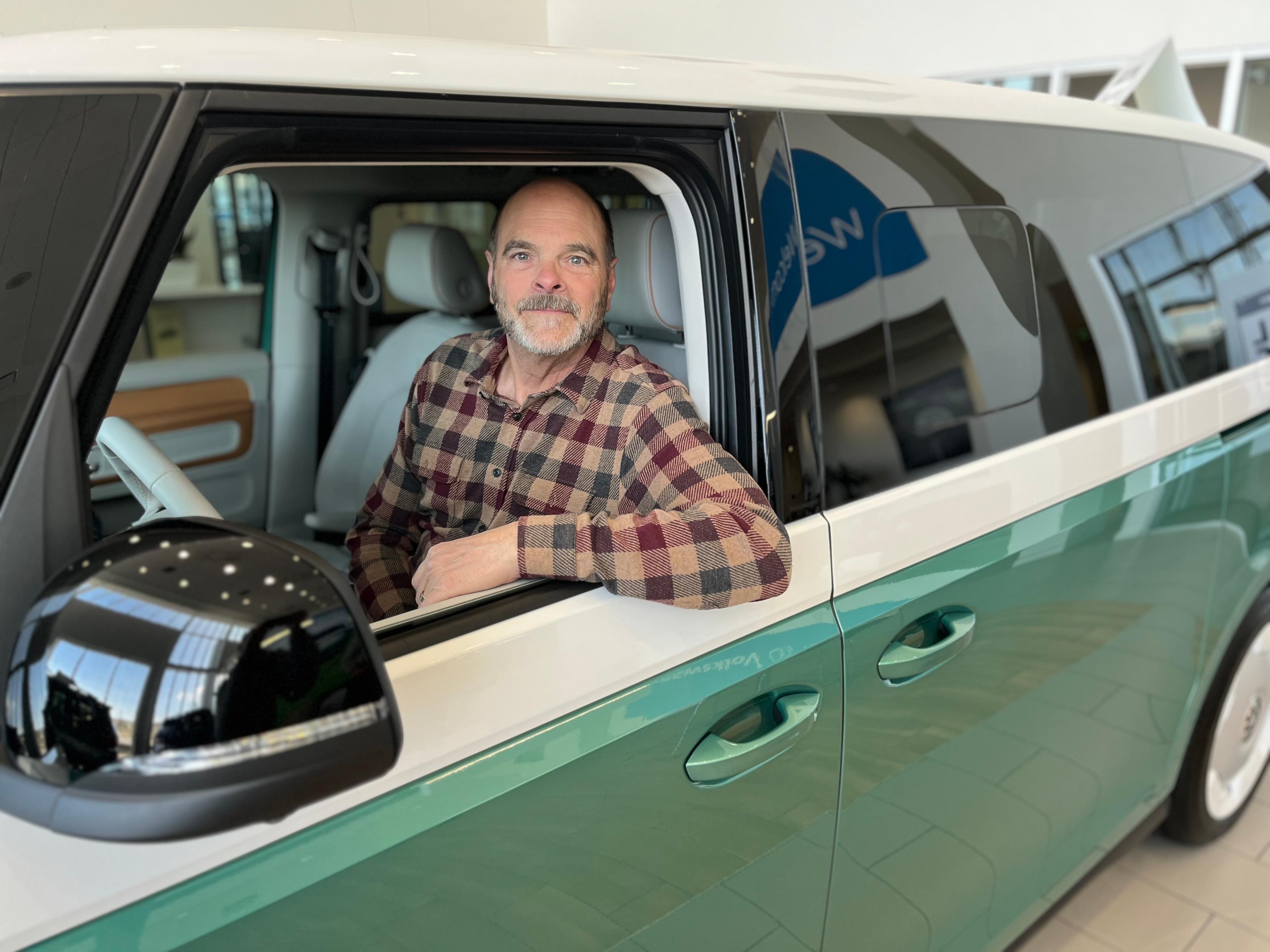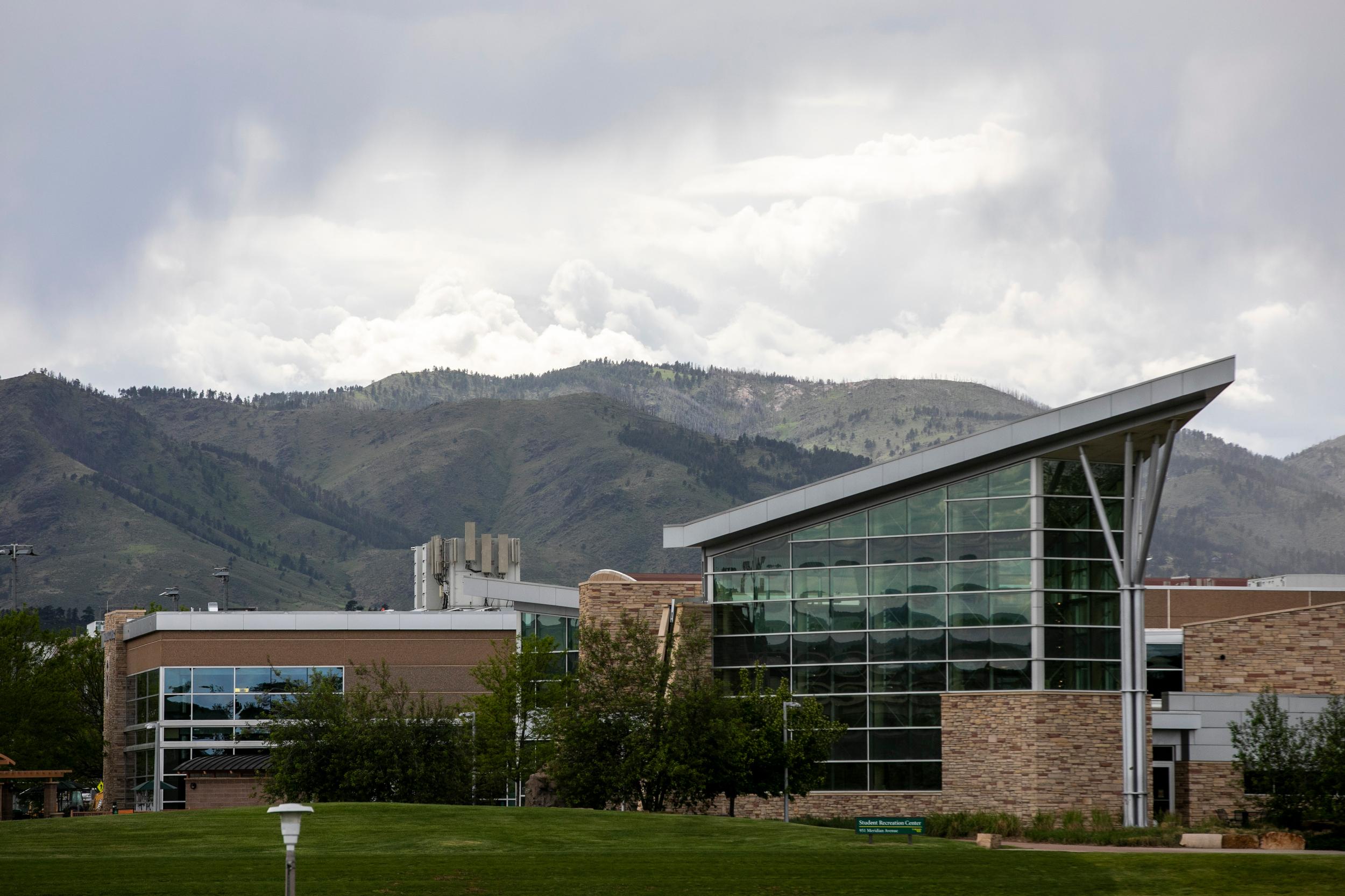Originally published on October 9, 2019 4:48 pm
Climate change has been called the new normal. But residents in some parts of the Southwest say after living through the last two years, there’s nothing normal about it.
Communities in the Four Corners -- where the borders of Colorado, Utah, New Mexico and Arizona meet -- have been bouncing between desperately dry and record-breaking moisture since the winter of 2017, forcing people dependent on the reliability and predictability of water to adapt.
On a recent warm, sunny day, Dustin Stein pushed down the wires of an electric fence with his left foot while he swung his other leg over into an irrigated pasture. His black and brown steers grazed on the late summer grass.
The 30-something, mustachioed rancher has managed Stubborn Farms and Burk Beef outside the small town of Mancos, in southwestern Colorado for the past seven years.
“We're a sperm to steak grass-fed beef operation,” Stein said with a laugh. Calves born on the ranch are raised here, and their meat sold directly to consumers. His focus is on the health of the soil, and the needs of the mother cows, Stein said.
If you want a sense of what climate change is doing to agriculture in the Southwest, and how individuals are reacting to unprecedented weather, this is a good place to see those effects on a small scale.
“We’ve set records almost every year, good or bad,” Stein said. “So hot, so dry. So much snow, the river's too high. It's just incredibly bipolar.”
The winter of 2017-2018 was one of the driest ever recorded in parts of the Four Corners, kicking off the latest intensification of a prolonged dry period that’s stretched nearly two decades. Rivers ran at some of their lowest flows ever recorded during their annual spring runoff in 2018.
That summer was the hottest on record across most of the Colorado Plateau. From October 2017 to September 2018, the region recorded its driest weather in more than a century of recordkeeping.
Stein draws irrigation water to grow forage for his cattle from the Mancos River, a tributary of the San Juan River. It’s a key water source for the ranchers and farmers in this agricultural valley. The river used to be reliable, Stein said.
“We've got fairly senior water rights in the Mancos Valley. Our water hadn't gone off until 2002. Since 2002 it's gone off almost every year at some point in the year,” Stein said.
With irrigation water tapped out in the summer of 2018, and his pastures turning brown, Stein made the expensive decision to send all his cows and their calves to high mountain pastures owned by a custom grazing operation 200 miles to the north, near Gunnison.
“Because there was no way that we were going to be able to economically keep them fed here in the valley,” he said.
Recouping the cost of 2018’s hot and dry summer will take a while, he said. A cow is not a quick turn investment, especially when you’re running a small-scale grassfed operation. The value of an animal is wrapped up in her genetics, and her overall health, he said, not how rapidly her calves pack on weight.
“That's the hardest part for me is it's such a long fiscal cycle,” he said. “From the time I breed a cow to the time I see revenue from her calf is three years.”
Stein thought he was out of the woods as this snow started flying at the start of this past winter. At its height in the spring, snowpack in some parts of the nearby San Juan mountains was at its highest level ever, compelling parched communities to quickly prepare for flooding.
“This year's had its own challenges,” Stein said. “We had so much snow. The river was higher this year than it had been in 60 or 70 years. So there was a lot of challenges actually getting our irrigation water.”
The spigot turned off this again summer, when the above-average heat and below-average moisture trend returned. Drought conditions have been slowly worsening in the Four Corners region since late July.
“It's made me realize that nothing is very predictable,” Stein said. “And I need to kind of manage more short term, week to week or day to day.
“I feel like I haven't had a break in I don't know, 18 months.”
This feeling that Stein is talking about, of being jerked around, lurching from one small weather-related crisis to the next, has a name, according to Gregg Garfin, climatologist and researcher at the University of Arizona.
“Some scientists and practitioners have referred to this as climate whiplash,” Garfin said.
For ranchers like Dustin Stein, he says climate change is not some far-off future problem. It’s affecting people now.
“In the Southwest, we live in a very variable climate to begin with and I think one of the concerns is about enhanced variation,” Stein said.
Garfin took a deep dive into what climate change effects look like in the Southwest as a contributor to the Fourth National Climate Assessment, a summary of scientific research put out by the federal government in late 2018. Garfin coordinated a group of scientists to compile their findings in the report’s chapter that focuses on the southwestern U.S.
They found strong evidence of rising temperatures. That finding alone causes a sort of domino effect, where the warmer temperatures upend the accumulation and timing of snowpack melting. That can then lead to a mismatch between a runoff period and when water users, like cities and ranchers, need it. The higher temperatures also sap more moisture from the region’s already arid soil, and pull more water from rivers and reservoirs in the form of evaporation. When precipitation does arrive, it’s less effective than it used to be.
“Then if you combine that with some kinds of disturbances, such as tree mortality like we've seen, mortality in ponderosa pine, piñon-juniper woodlands, and also fires,” Garfin said. “Those things can reset ecosystems.”
A woodland might come back as a shrubland. Or a shrubland might return as a grassland. Or a grassland might turn into a desert.
All these changes combined can, in turn, limit which livelihoods are able to survive in a given area. For agriculturalists, there’s lots of talk about adapting to this changing climate. But for small-scale operations, rearranging a farm or ranch to withstand the whiplash is expensive.
“It's a cost,” said Carrie Padgett, a water engineer for Harris Water in Durango, Colorado. “It's something you have to plan for.”
Padgett points to irrigation. Much of that infrastructure was built almost a century ago. Both drought and flood have strained their systems. Using more efficient irrigation often requires upgrades to water infrastructure on farms, and many individual farmers and their associated ditch companies aren’t always able to foot the cost, she said.
“I think most people are living day to day in their operations and they're not able to have that forethought to really save the money to plan for those future costs or replacements,” Padgett said.
In Mancos, rancher Dustin Stein is thinking about how to make changes to his ranch to better mirror the erratic weather. He’s shortening up his management timeline, and focusing his energy on keeping the ranch running without spending too much time trying to predict what next week’s weather will bring.
Unlike some of the old-timers who ranch nearby, Stein is young enough that he’ll likely be around to see climate change reshape the Southwest. Most of the forecasts in the National Climate Assessment project out to 2050, when Stein will be in his 60s.
He knows his valley is a fragile, precarious place to be in a hotter, drier future.
“We're literally on the edge of 14,000-foot mountains in between dry, dry desert,” Stein said. “And so I can see how that dry desert will slowly creep in towards us.”
But, he said there’s something exciting about being an early adapter, on the front lines of people feeling the effects of climate change, and being nimble enough to change with it. At least for now.
If he’s able, he’ll be taking an historic livelihood, like ranching, and figuring out how to keep it going even when it looks like all the cards are stacked against it.
“That terrifies me to think about having to move from this valley or find another line of work. At this point in my life I'm really not willing to do that.
“And so I'm inspired to figure out how to make it work. That’s the only option.”
This story is part of a project covering the Colorado River, produced by KUNC and supported through a Walton Family Foundation grant. KUNC is solely responsible for its editorial content.
Copyright 2019 KUNC. To see more, visit KUNC.








